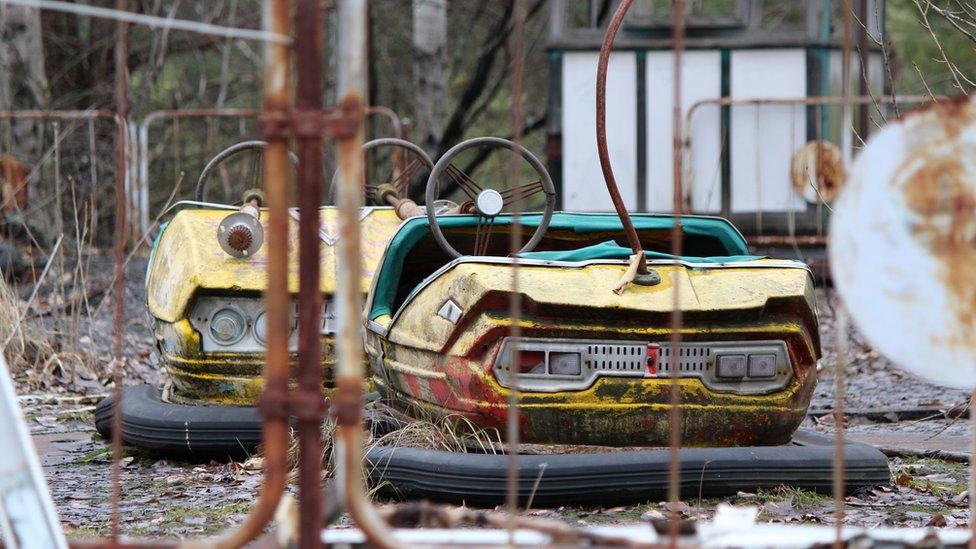Chernobyl disaster: Ukraine marks 30th anniversary
- Published
Tom Burridge on the ghost town legacy of Chernobyl
Commemorations are under way in Ukraine to mark the 30th anniversary of the nuclear disaster at Chernobyl.
Sirens were sounded at the same moment as the first explosion at the reactor, in the early hours of 26 April 1986.
The meltdown at the Soviet plant was the worst nuclear disaster in history.
An uncontrolled reaction blew the roof off, spewing out a cloud of radioactive material which drifted into other parts of the USSR, including Russia and Belarus, and northern Europe.
Relatives of those who died attended candle-lit vigils at several churches, including at Slavutych, a town built to re-house workers who lived near the nuclear plant. A series of events are being held throughout the day.
Chernobyl was the worst nuclear accident in history
BBC Rewind looks at what was done to stop further damage
Ukrainian President Petro Poroshenko laid a wreath and observed a minute's silence in the Ukrainian capital Kiev before heading north for a ceremony at the plant itself, not far from the Belarussian border.
"We honour those who lost their health and require a special attention from the government and society," he said in a speech in Chernobyl. "It's with an everlasting pain in our hearts that we remember those who lost their lives to fight nuclear death."
He also said the nuclear disaster had been Ukraine's biggest challenge between the Nazi occupation in World War Two and the recent conflict in eastern Ukraine, which he described as "Russian aggression".
"At a time when we still need immense resources to tackle the consequences of the Chernobyl disaster, when we need funding for social support to fire-fighters and victims, we have to spend almost one-fifth of our budget expenses on defence and security," he said.
Russian President Vladimir Putin, in a message to the 600,000 people who helped in the clear-up - known as liquidators - called the nuclear disaster "a grave lesson for all of mankind".

Etched in Ukraine's consciousness: analysis by Tom Burridge, Chernobyl
Chernobyl is not a historical event in Ukraine but a living reality for an unquantifiable number of people. For the people who were evacuated after the disaster and separated from their families. For the estimated 180 residents who still live inside the 30km exclusion zone.
For the army of workers who go there every day to continue work to secure the site, by constructing the giant shield-like structure which will be moved over reactor 4 later this year. Work to remove the radioactive contents of the reactor could take decades.
Then there are those who died in the immediate aftermath of the accident. Their loved ones still mourn. And finally there is the highly contentious issue of how many people have died, or suffered illnesses, particularly cancers, because of exposure to high levels of radiation. That debate will probably never be resolved.
The attempted cover-up by the Soviet authorities in 1986 further discredited rule by Moscow. And 30 years on, Chernobyl is etched into the consciousness of an independent Ukraine.

Vasyl Markin, who had been working in Chernobyl at the time of the disaster, attended the midnight vigil in Slavutych.
"This tragedy will stay with us till the end of our lives," he said. "I won't be able to forget it anyway."

Some former residents returned to the area, now derelict and overgrown, ahead of the anniversary.
Zoya Perevozchenko, 66, had lived in Pripyat, the town inhabited by Chernobyl workers which was abandoned in the wake of the accident.
She told Reuters news agency: "I barely found my apartment, I mean it's a forest now - trees growing through the pavement, on the roofs. All the rooms are empty, the glass is gone from the windows and everything's destroyed."
Levels of radioactivity remain high in the surrounding area. A charity, Bridges to Belarus, is warning that a number of babies in a region close to Ukraine's border are still being born with serious deformities, while an unusually high rate of people have rare forms of cancer.
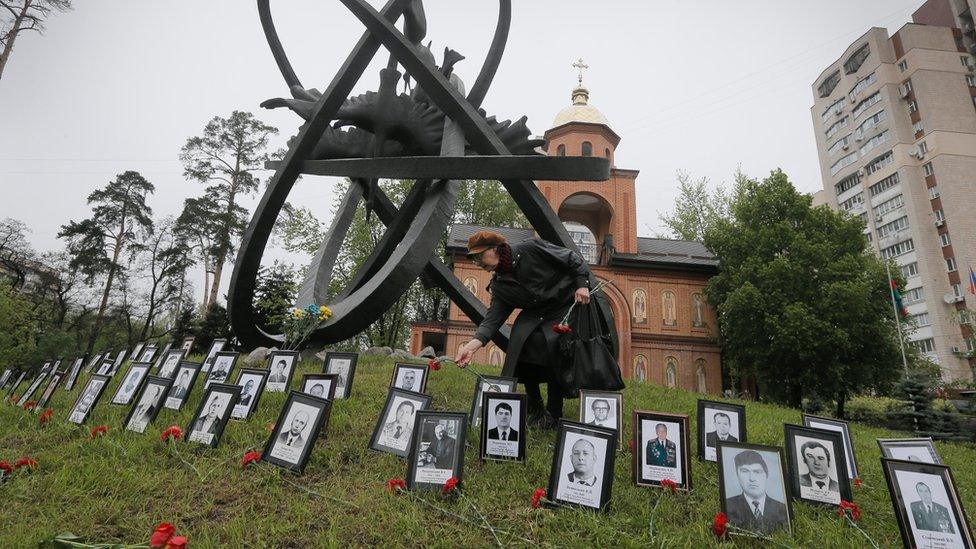
Photos of some of those who lost their lives form a memorial display in Kiev

The disaster was remembered by Belarussian veterans of the clear-up, at a ceremony in Minsk
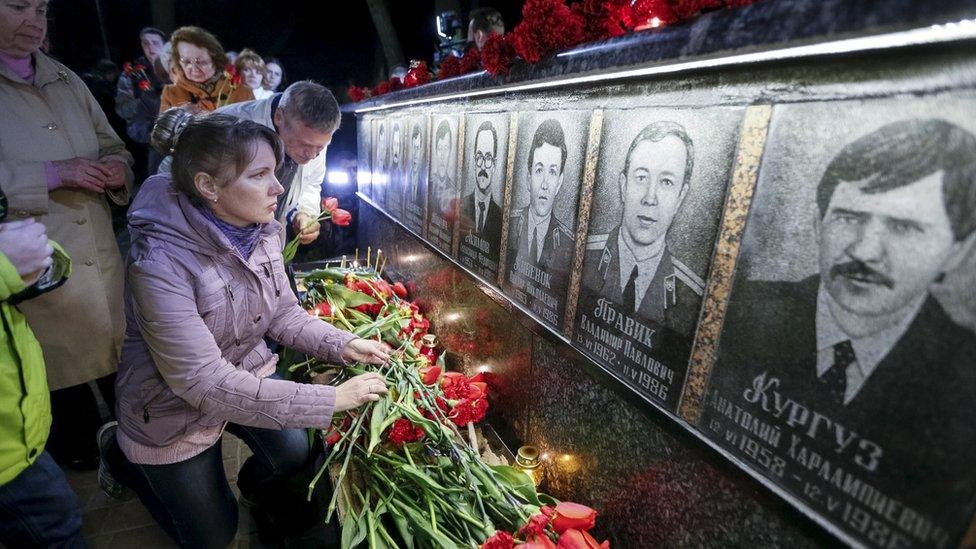
People laid flowers at a memorial to firefighters and workers who died in the disaster
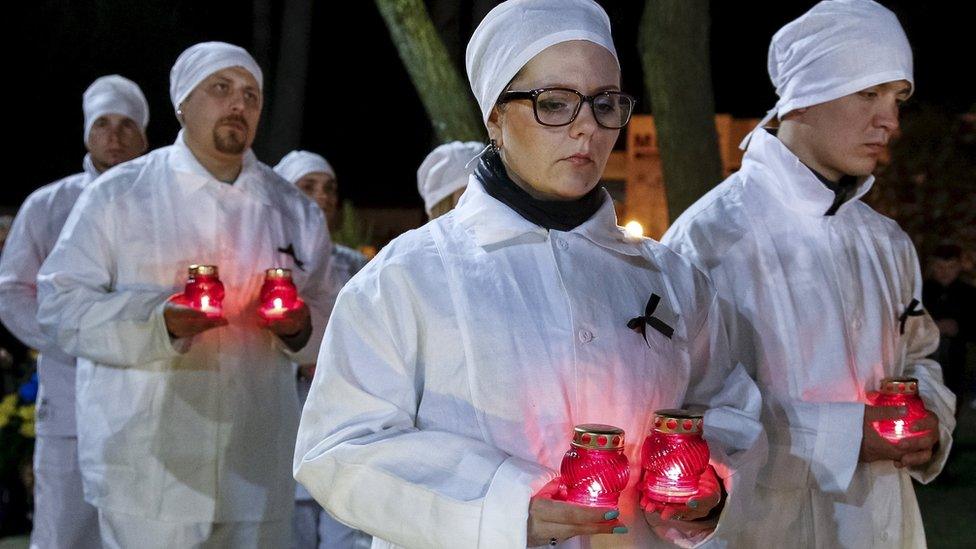
Candles were lit at a ceremony in Slavutych, a town built to re-house workers who lived near the nuclear plant
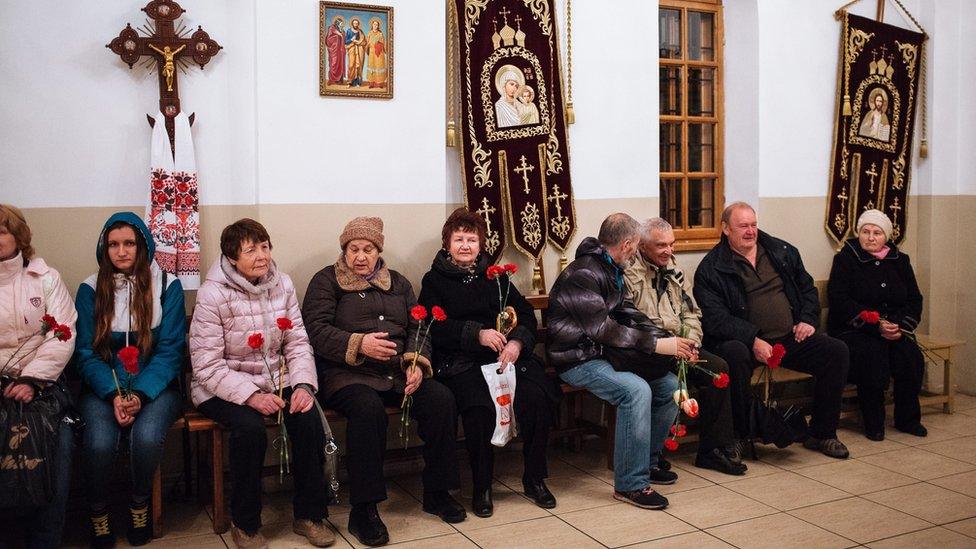
A service of remembrance for those who died was held near the Chernobyl memorial in Kiev
Donors around the world pledged €87.5m (£68m; $99m) on Monday towards a new underground nuclear waste facility in the region. Ukraine will need to commit a further €10m in order to complete the new storage site.
Work began in 2010 on a 25,000-tonne, €2.1bn sarcophagus to seal the uranium left in the damaged reactor, thought to be about 200 tonnes.
Experts fear that if parts of the aging reactor collapse, further radioactive material could be spewed into the atmosphere.

Ukrainian press remembers Chernobyl
Newspapers in Ukraine carry sombre features looking back at the disaster and discussing ways of rehabilitating the exclusion zone.
Segodnya carries a picture of the Chernobyl plant on its front page and highlights plans to create a nature reserve around it. Most of the area is "clean" now, it quotes the Ukrainian environment ministry as saying.
Ukraina Moloda daily also says that the area has become "safer" and is now being promoted as a tourist attraction. Its front page headline recalls that "The nuclear industry brought a lot of sorrow to Ukraine".
KP v Ukraine, a tabloid, calculates the disaster's cost and reaches the conclusion that money alone is not enough to estimate it. Mortality rates jumped by as much as 40% in certain parts of Ukraine, and many families were simply afraid to have children. "The Chernobyl disaster has resulted in at least 50,000 children not being born," the paper says.

WATCH: How a game development company created a virtual reality experience of Chernobyl
The number of people killed by the disaster remains disputed. A report in 2005 by the UN-backed Chernobyl Forum, external concluded that fewer than 50 people had died as a result of exposure to radiation, most of them workers killed immediately after the disaster, but some survived until as late as 2004.
The forum estimated up to 9,000 people could eventually die from radiation exposure, although Greenpeace claims the figure could be as high as 93,000.
- Published26 April 2016
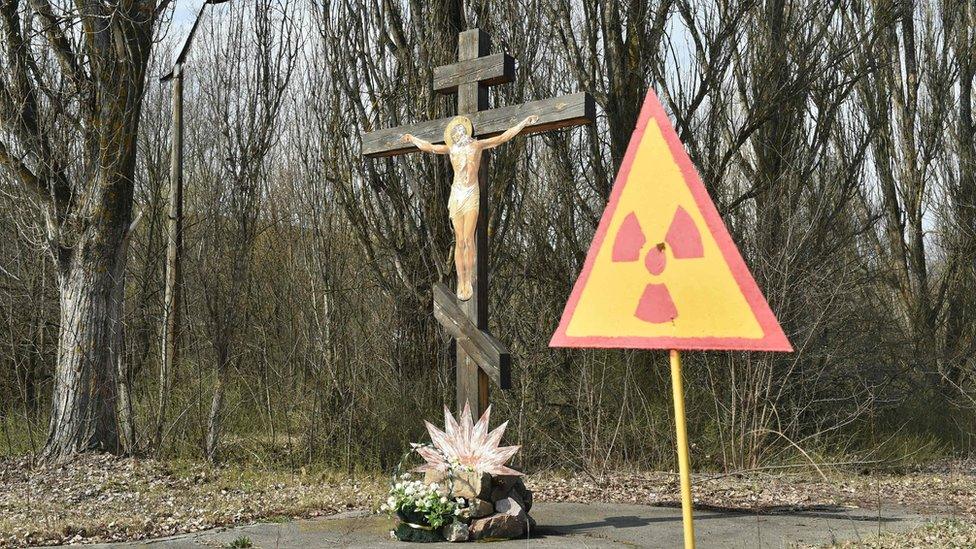
- Published25 April 2016
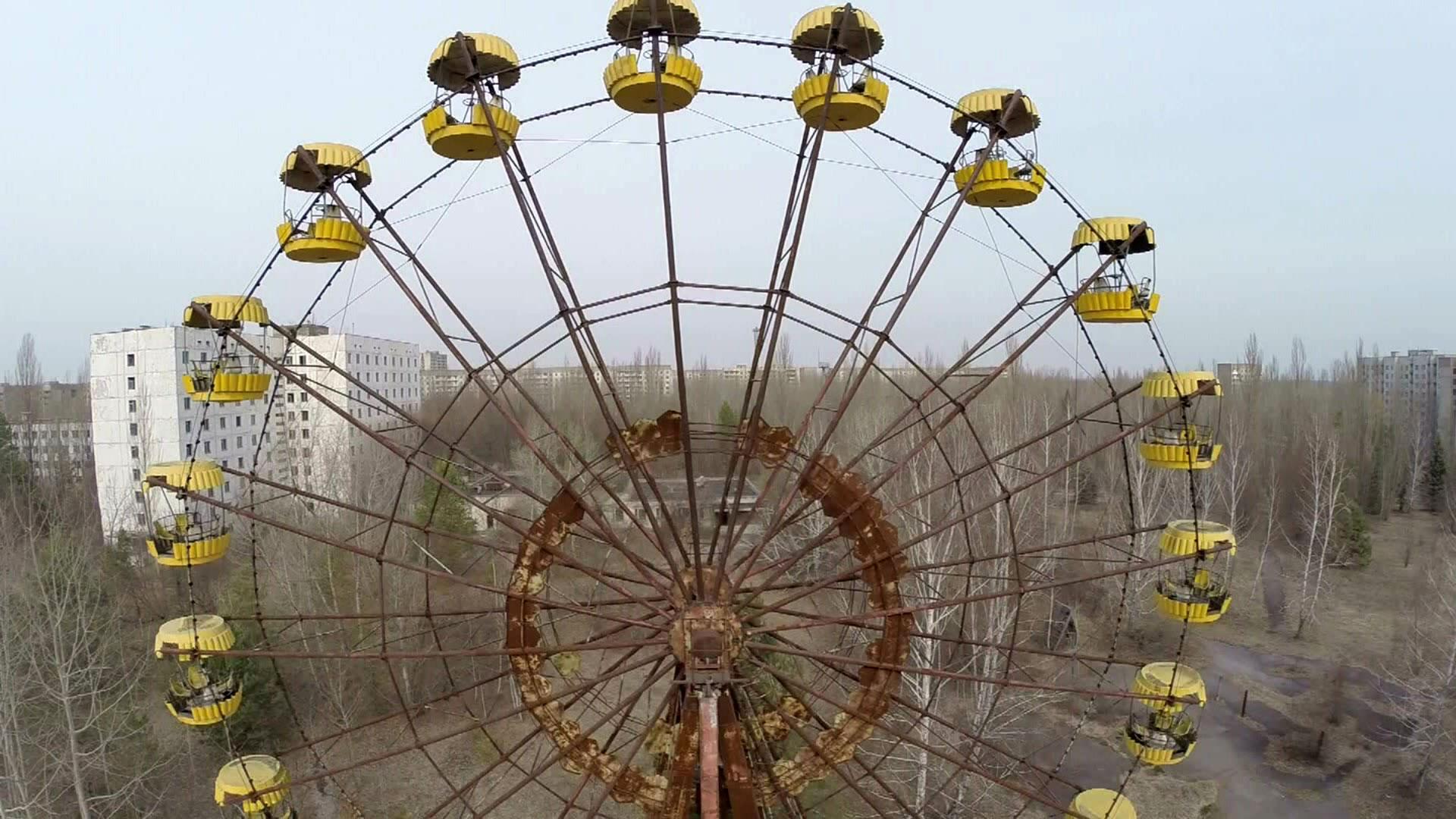
- Published23 April 2016
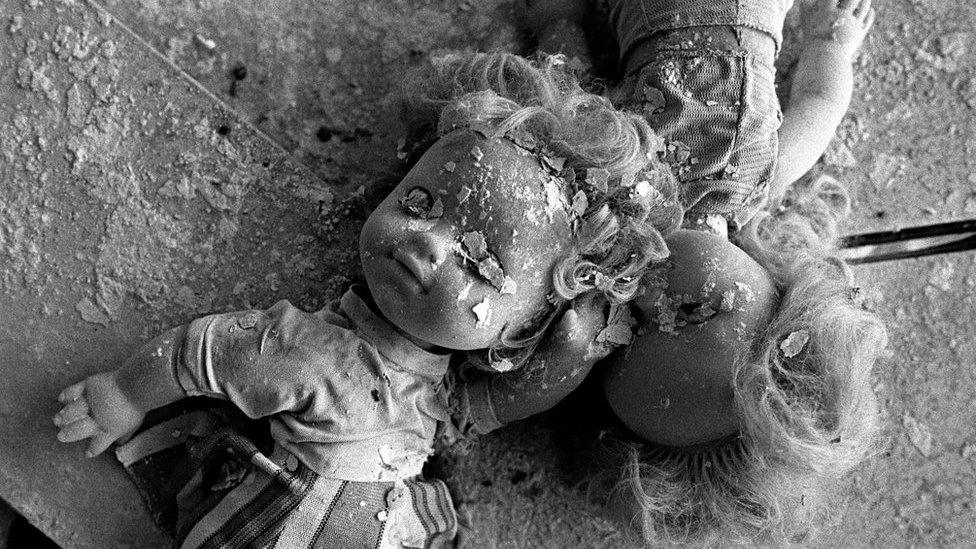
- Published30 March 2016
